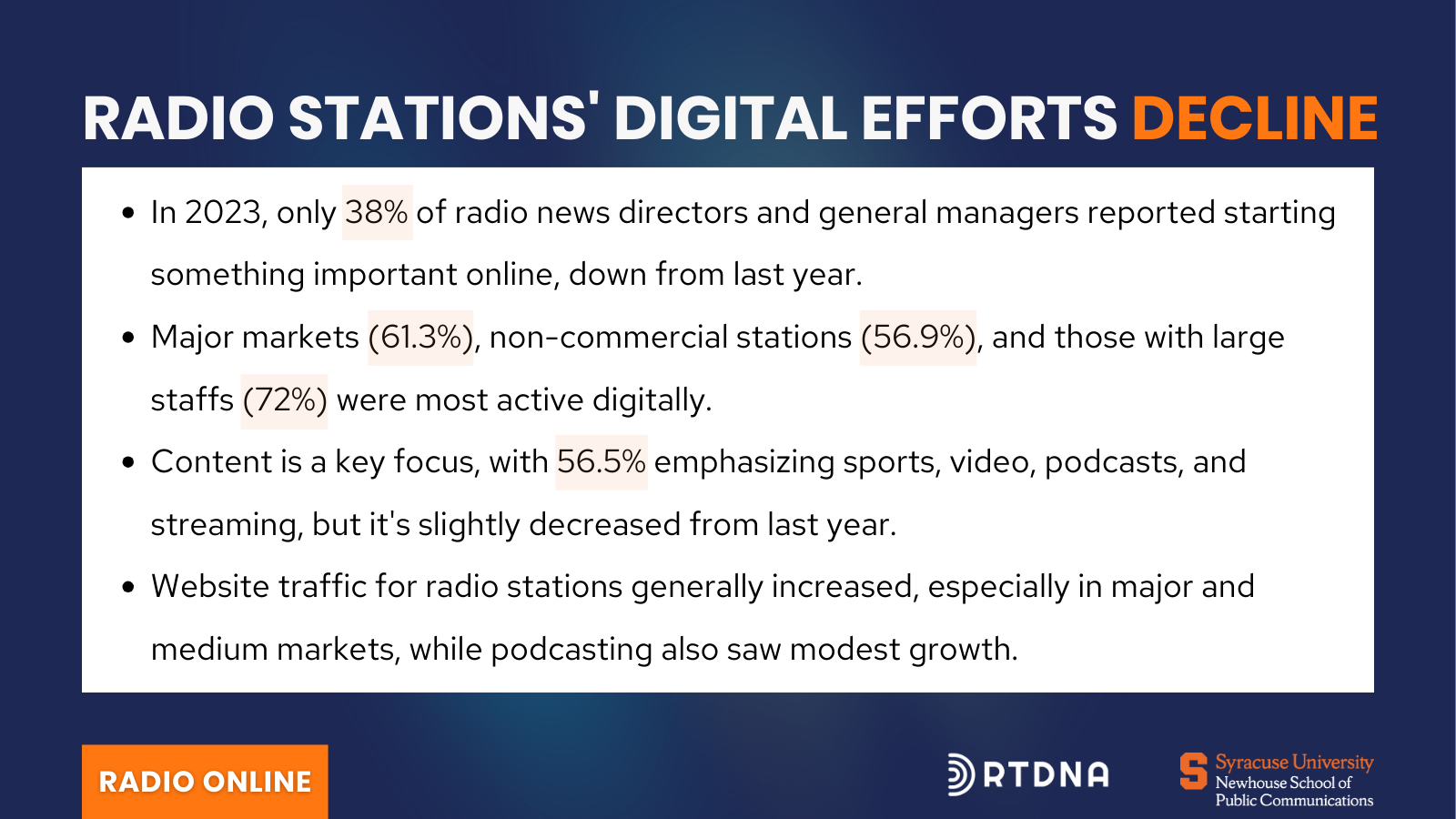What’s new digitally at radio stations?

By Bob Papper and Keren Henderson
Aug. 20, 2024 — In radio, the percentage of news directors and general managers saying they started something important digitally edged down from a year ago. Just 38% say they started something important online in 2023 — that’s a decrease of nearly three-and-a-half points compared to last year.

Major markets (61.3%), non-commercial stations (56.9%) and those with the biggest staff (72%) are most likely to say they started something important.
More than a hundred radio news directors and general managers listed what they’re doing in the latest RTDNA/Newhouse School at Syracuse University Survey.
At the top of the list comes content. At 56.5% of the responses, it’s down a bit from last year. The content can be divided into three almost equal parts. There’s the “more” content, including sports, video and just more stuff. Then there’s the podcast segment — way up from past years.

Podcasts continue to get a lot more attention on the radio than at TV stations. The average number of podcasts at radio stations is 2.4 this year. That’s up 0.2 from last year, but it’s still down a bit from a couple of years ago. Still, the median (typical) number of podcasts is back up to one. It hit that mark for the first time two years ago but dropped back to zero last year. The median at commercial radio remains at zero, but non-commercial has a median of two — bringing the overall median to one.
About the Authors
Bob Papper is Research Professor of Broadcast and Digital Journalism at Syracuse University and has worked extensively in radio and TV news.
Keren Henderson is Associate Professor of Broadcast and Digital Journalism at Syracuse University.
This research was supported by the S. I. Newhouse School of Public Communications at Syracuse University and the Radio Television Digital News Association.
About the Survey
The RTDNA/Newhouse School at Syracuse University Survey was conducted in the fourth quarter of 2023 among all 1,876 operating, non-satellite television stations and a random sample of 4,764 radio stations. The television response rate is different for every question, but Valid responses came from as many as 1,387 television stations (73.9%) and 631 radio news directors and general managers representing 1,902 radio stations. Some data sets (e.g. the number of TV stations originating local news, getting news from others and women TV news directors) are based on a complete census and are not projected from a smaller sample.
